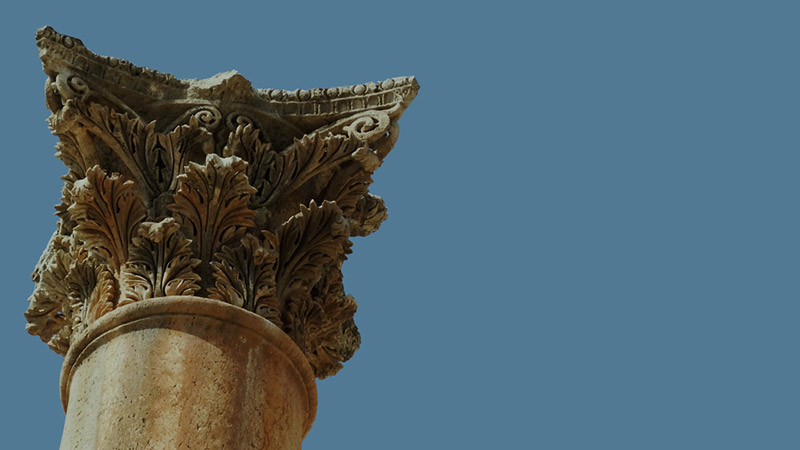More Results
Showing 12 of 103
Articles

In Herod's Footsteps
In Herod's FootstepsHerod lay dying in his opulent palace in Jericho. He had been seriously ill for a long time. From the description in Josephus' writings, Herod had gangrene, severe itching, convulsions, and ulcers. His feet were covered with tu...
MORE
In the Shadow of Herod
Herod s Magnificent PalaceThe Herodion, third largest palace of its day, stood as a magnificent monument to Herod's wealth and power.The Herodion, third largest palace of its day, was built in the wilderness near Bethlehem. The huge structure was ...
MOREEncyclopedia

Inside the Herodion
This view is from the outer wall of the upper fortress of the Herodion. You can see the astonishing magnitude of this palace. Herod's workers began with a natural hill considerably higher than other hills in the area. They constructed double cyndr...
MORE
Jericho
Jericho, which literally means "fragrant place," boasts a pleasant climate with plenty of sunshine and a lush oasis watered by Elisha's Spring. The city is located north of the Dead Sea, 17 miles from Jerusalem.There are actually three c...
MORE
Jerusalem Districts
David's City The Jerusalem of David's time, located on a narrow strip of land (Mount Moriah), was about ten acres in size and populated by aprroximately 1,500 people. The city was naturally defended by the Kidron Valley to the east and the Tyropea...
MORE
Jerusalem Geography
Hinnom Valley This valley formed the western boundary of the Upper City of Jesus' time; it began along the Western Hill and ended where the Tyropean and Kidron Valleys meet.Just west of Jerusalem, this valley was at one time the city sewage dump, ...
MORE
Jerusalem: The Eastern Gate
This gate was built in the sixteenth century, long after New Testament times. Several years ago, the Herodion remains were accidentally uncovered below this gate, indicating that it was probably built over the one used when Jesus visited the templ...
MORE
Jerusalem: The Southern Stairs
This photograph shows the southern stairs as viewed from the west, looking onto the stairs and Herod's massive Temple.On the right side of the photo is a straight joint in the wall. This is the beginning of Herod's extension of the Mount to the so...
MORE
Jerusalem: The Temple
This view is of the Temple, looking west. The Temple was one of the greatest buildings commissioned by Herod. The front was 170 feet high and 170 feet wide. The back portion was 170 feet high and 115 feet wide.The building was made of white marble...
MORE
Jerusalem: The Temple Mount Colonnade
The enormous Temple Mount of Herod had a 45-foot-wide colonnade around it. The eastern colonnade was called Solomon's Colonnade and was used by Jesus and the early Christians as a place of meeting and teaching. More than 40 feet high, the roof of ...
MORE
Jerusalem: Western Wall
This section of the Temple Mount Wall dates from the time of Herod. The Temple stood on the floor above the wall shown here. This particular wall would have been more than 40 feet above the street in Jesus day. The Roman destruction of the Temple ...
MOREGlossary

Idumea Definition
Another name for the city of Edom, meaning "red." Located south of the Dead Sea and west of Arabah; home of Herod the Great. Some early followers of Jesus came from Idumaea (Mark 3:8).
MORE

















